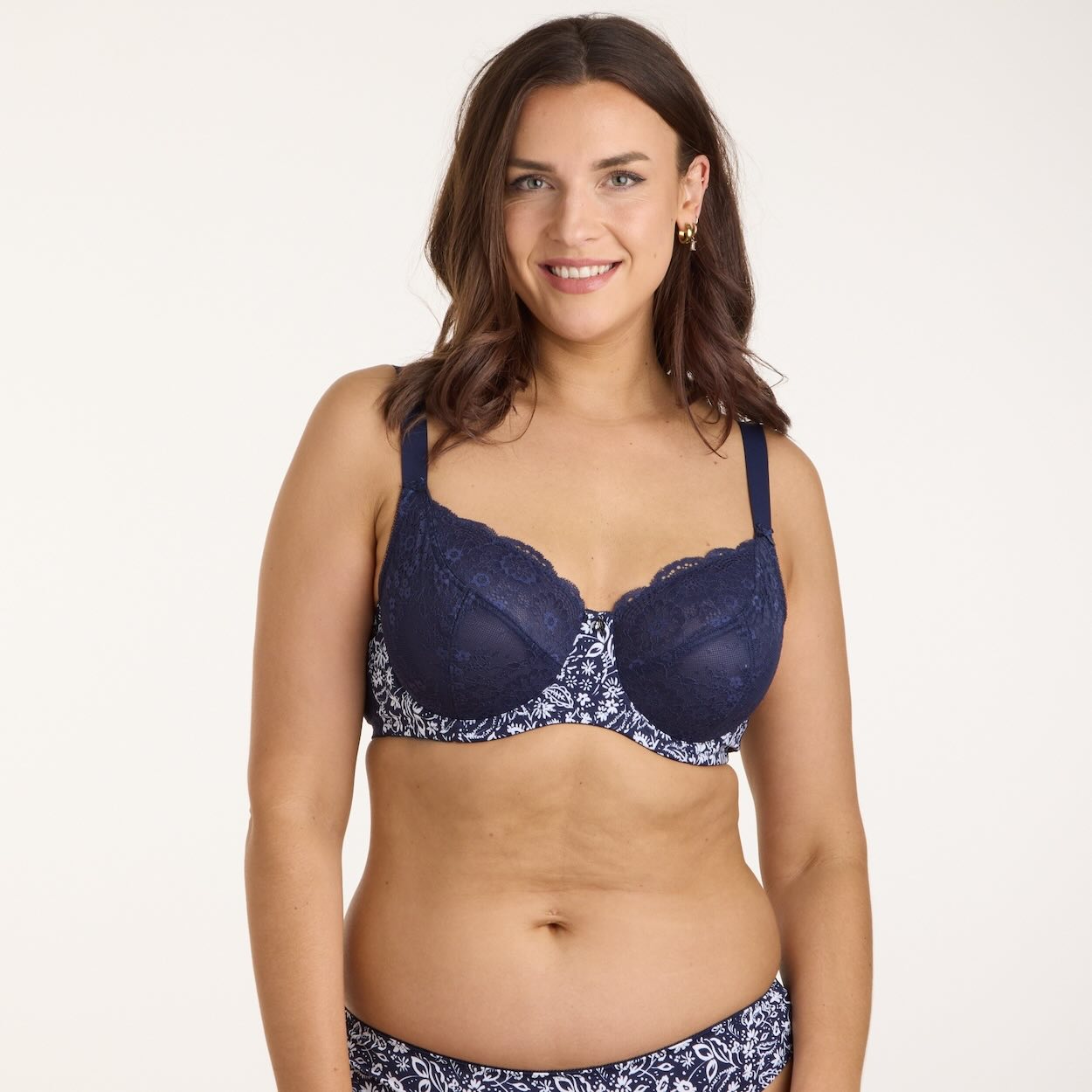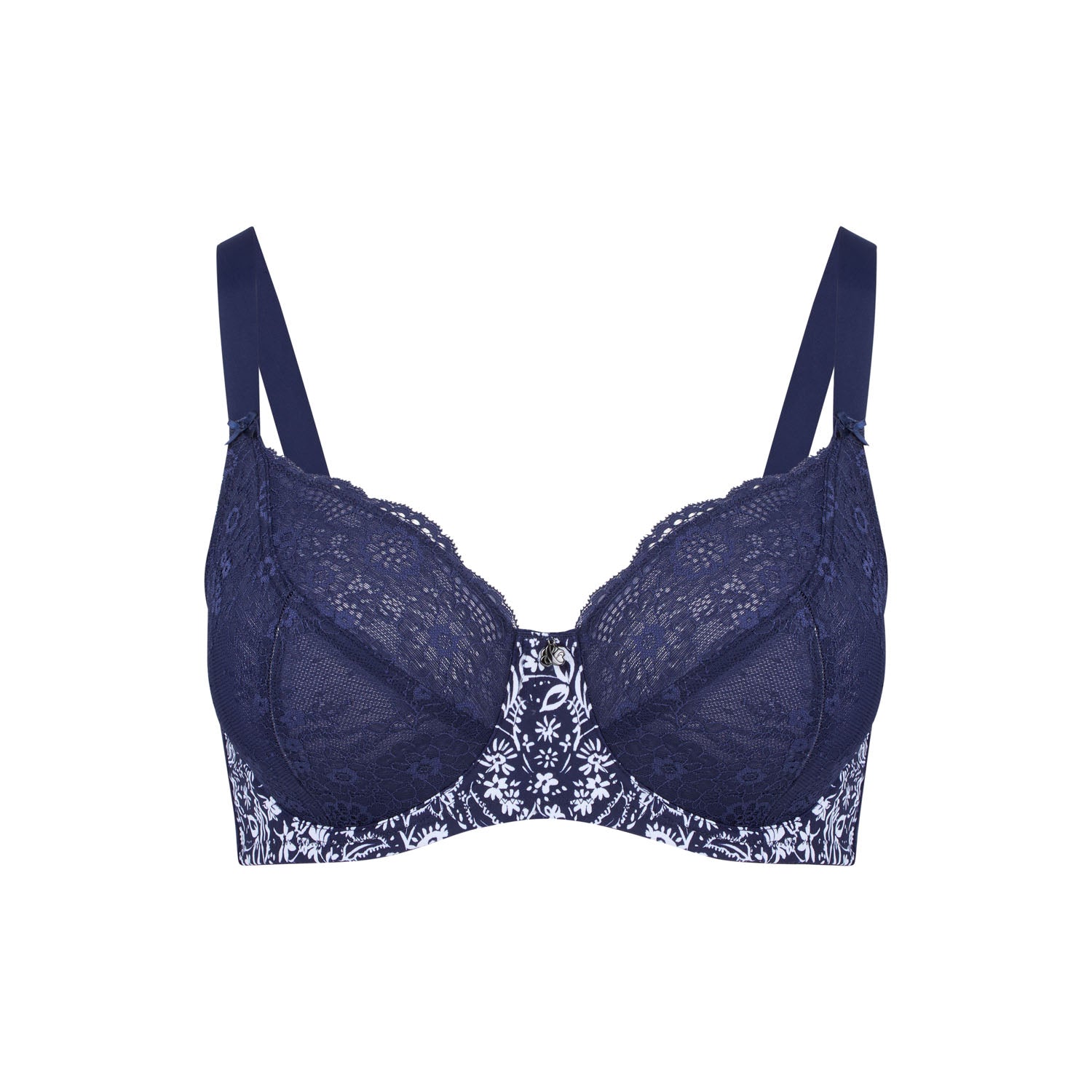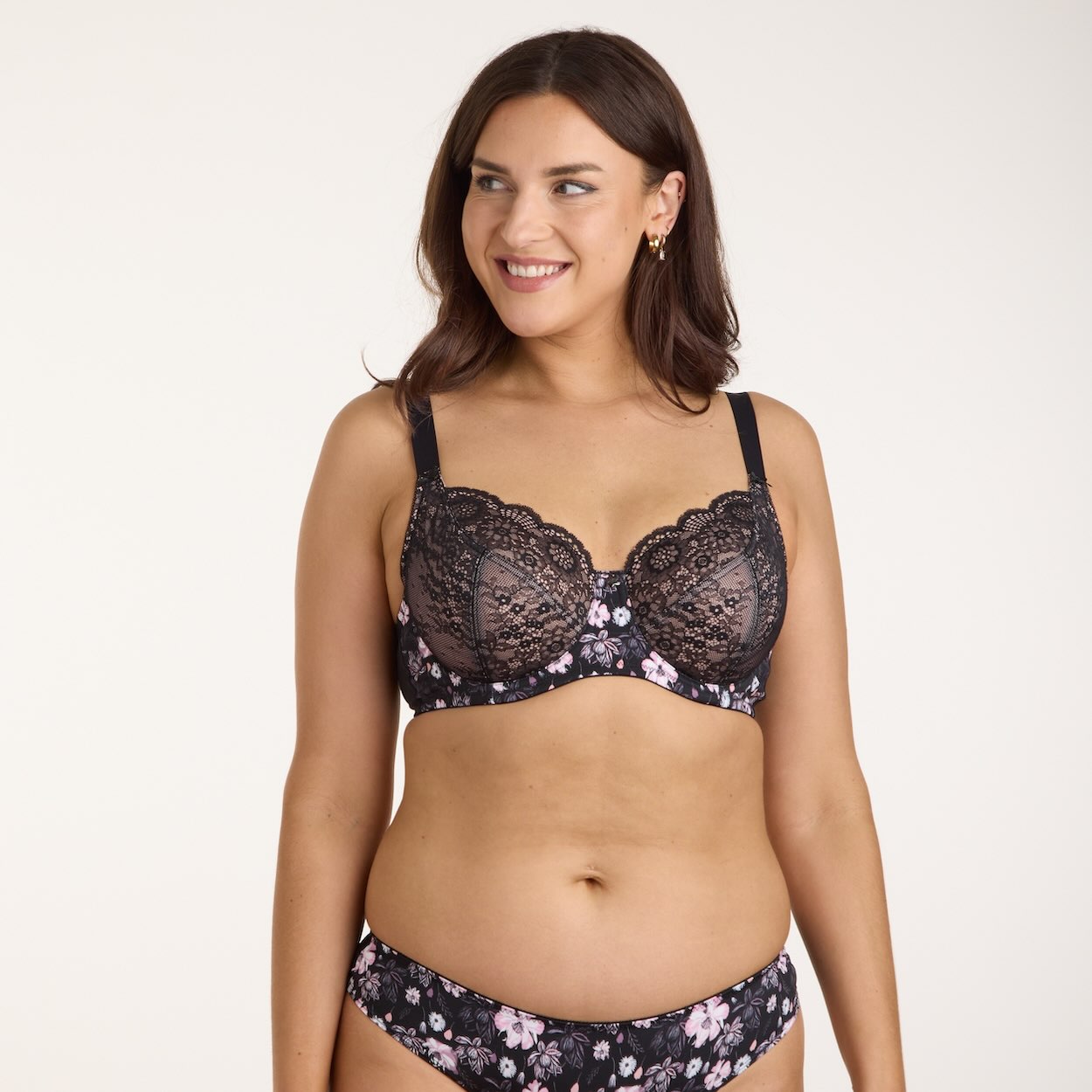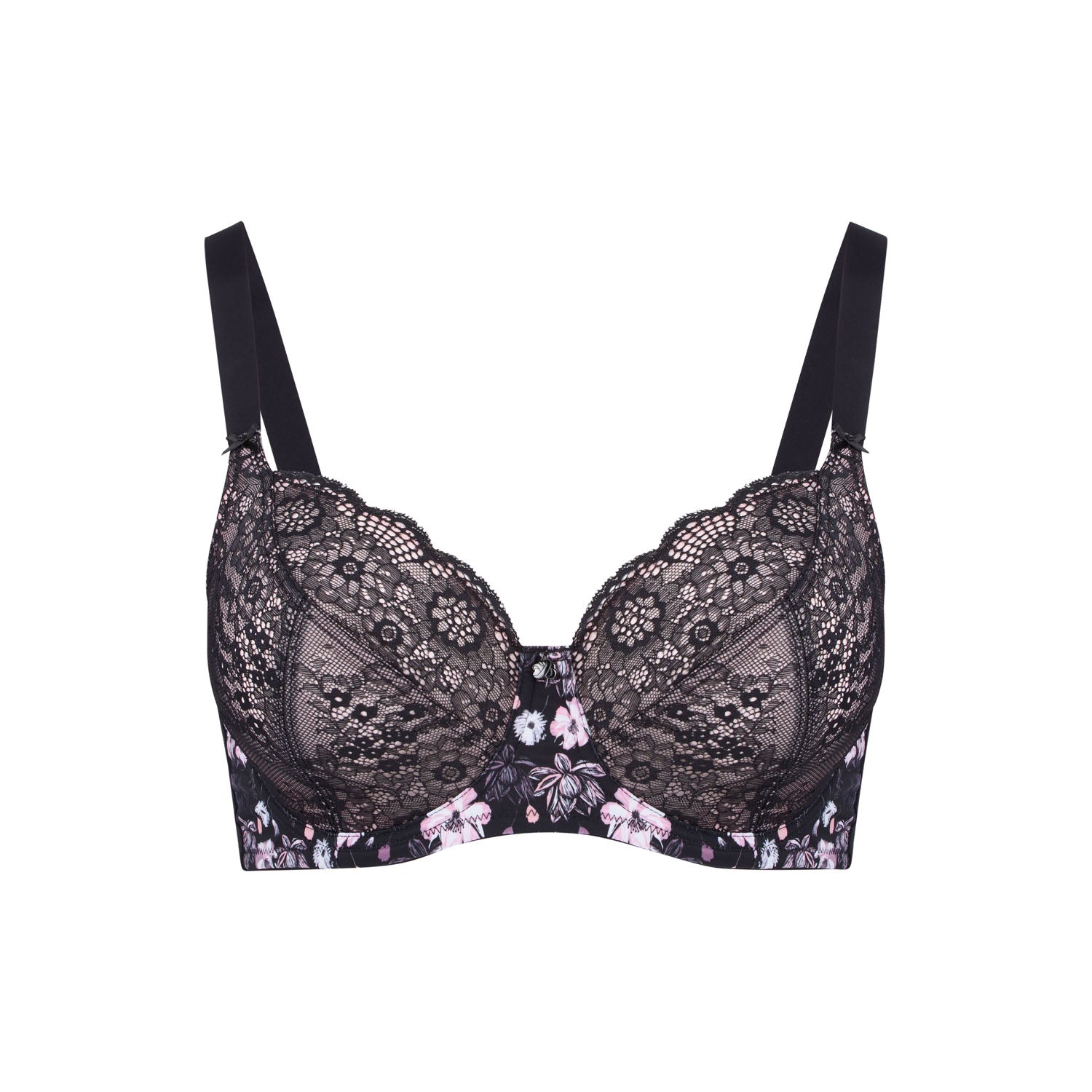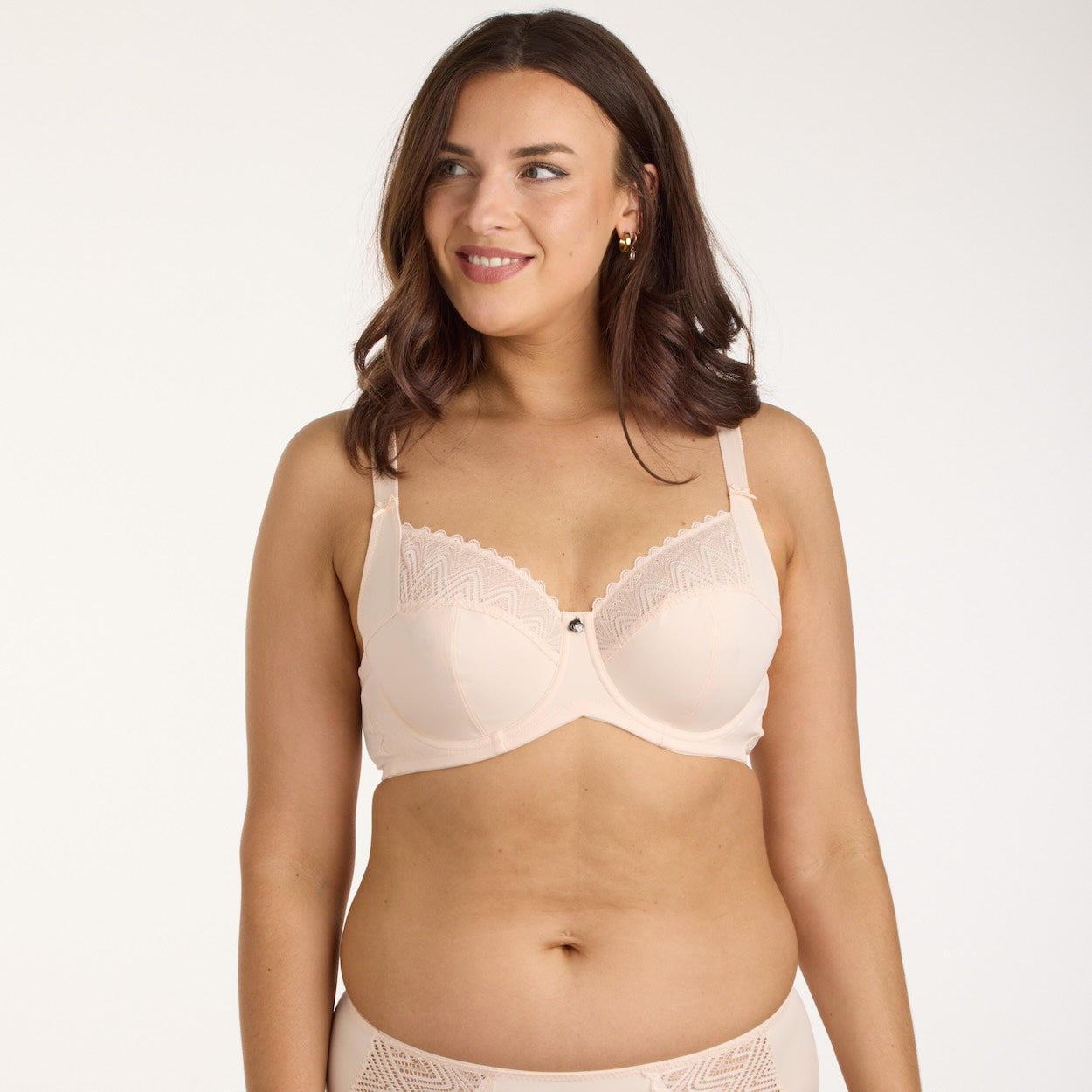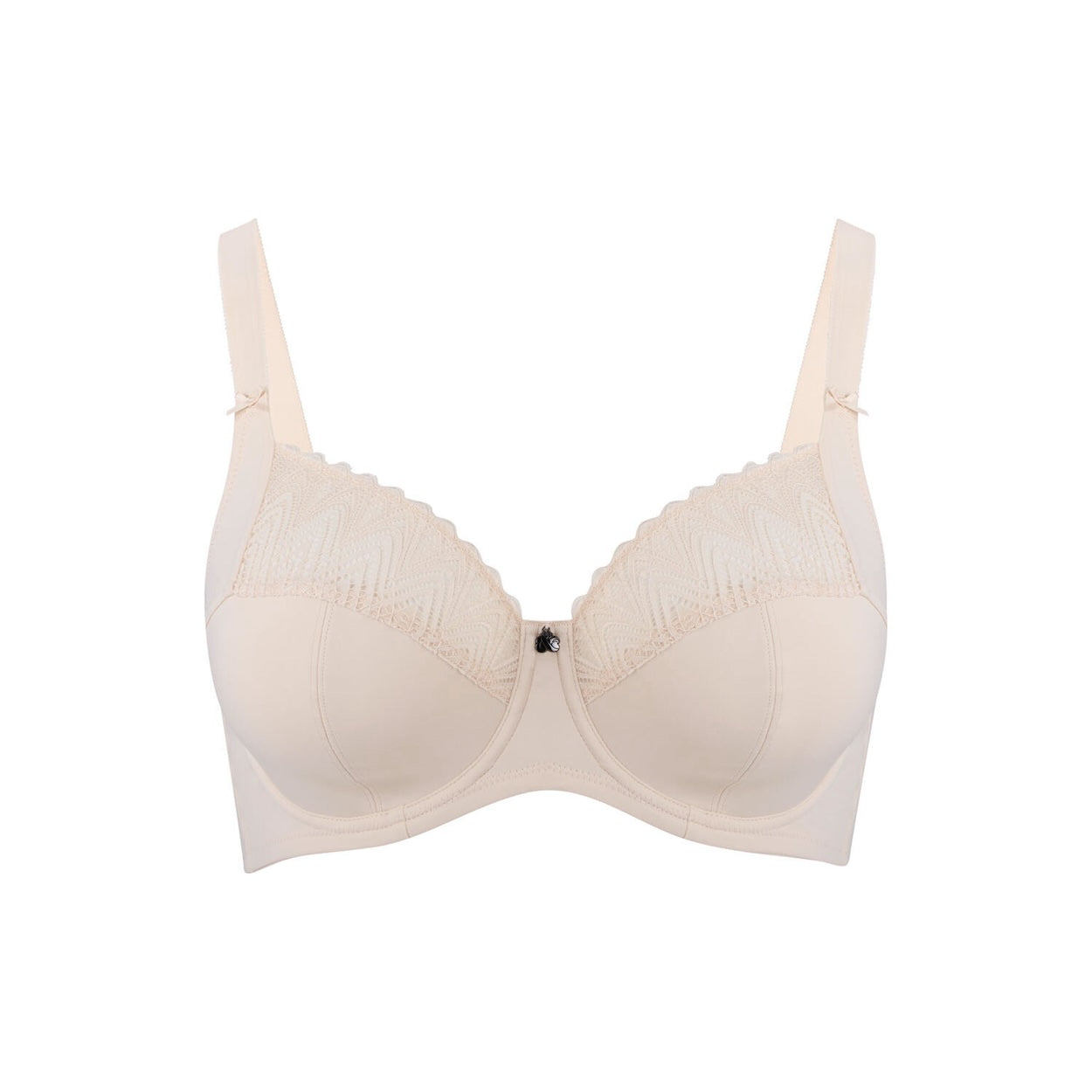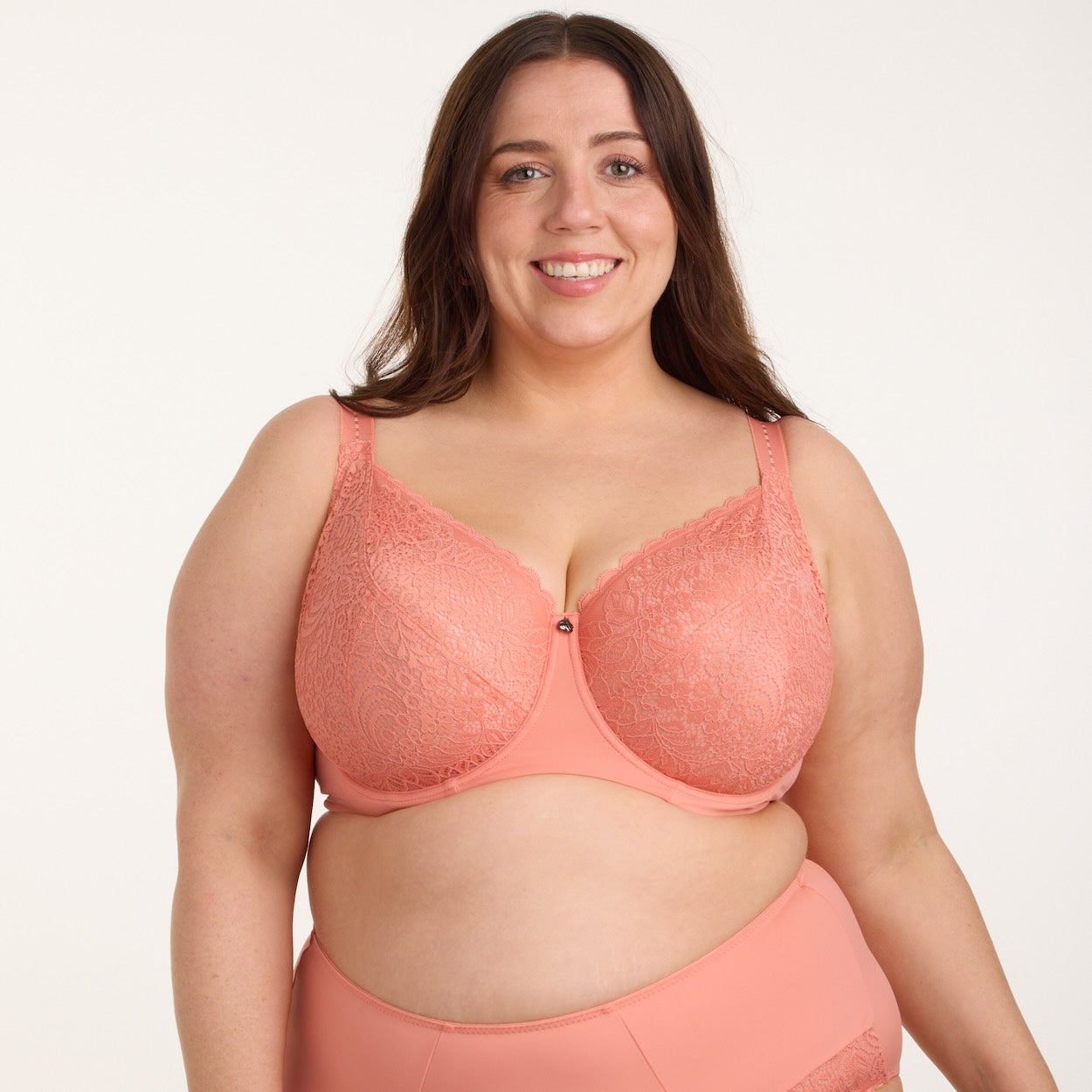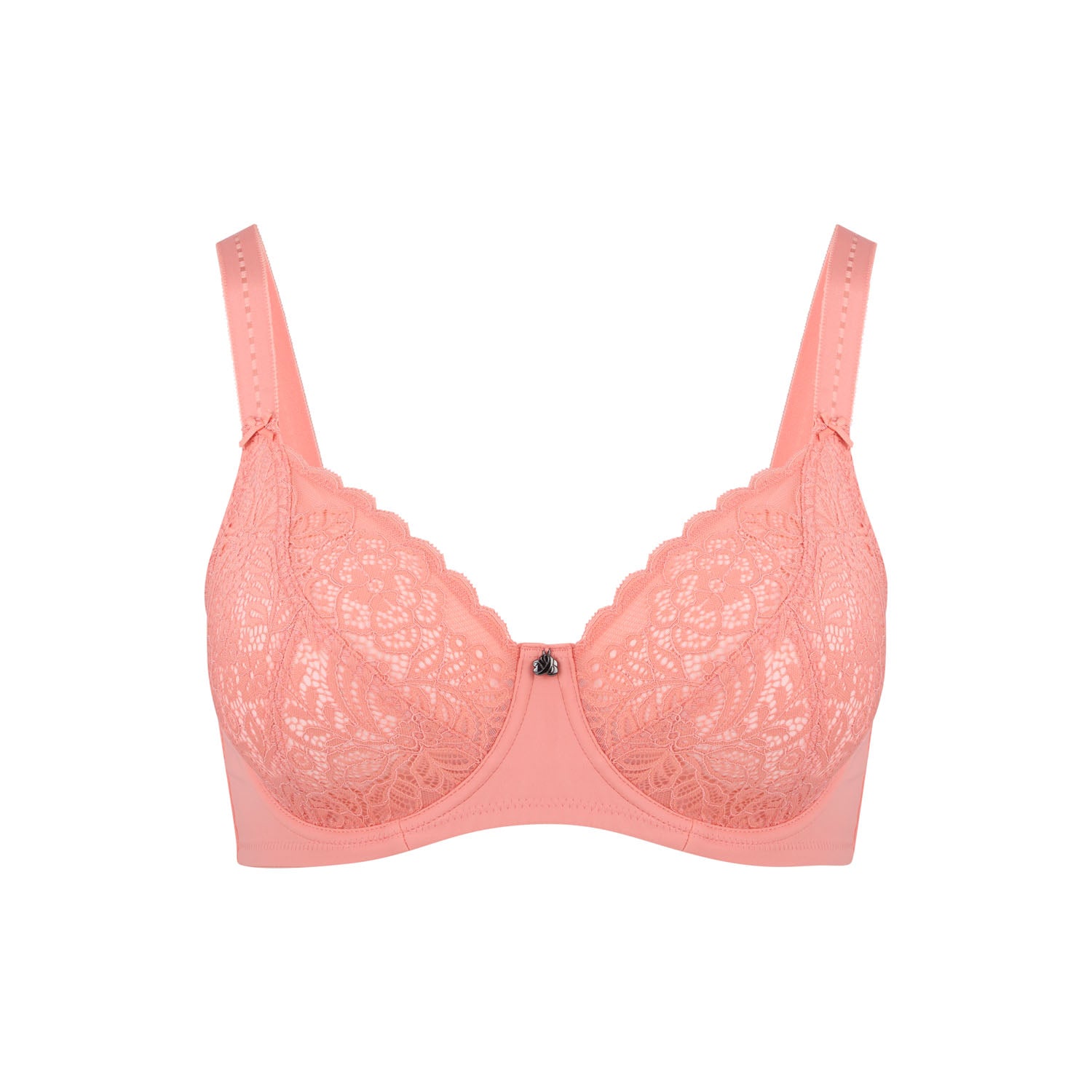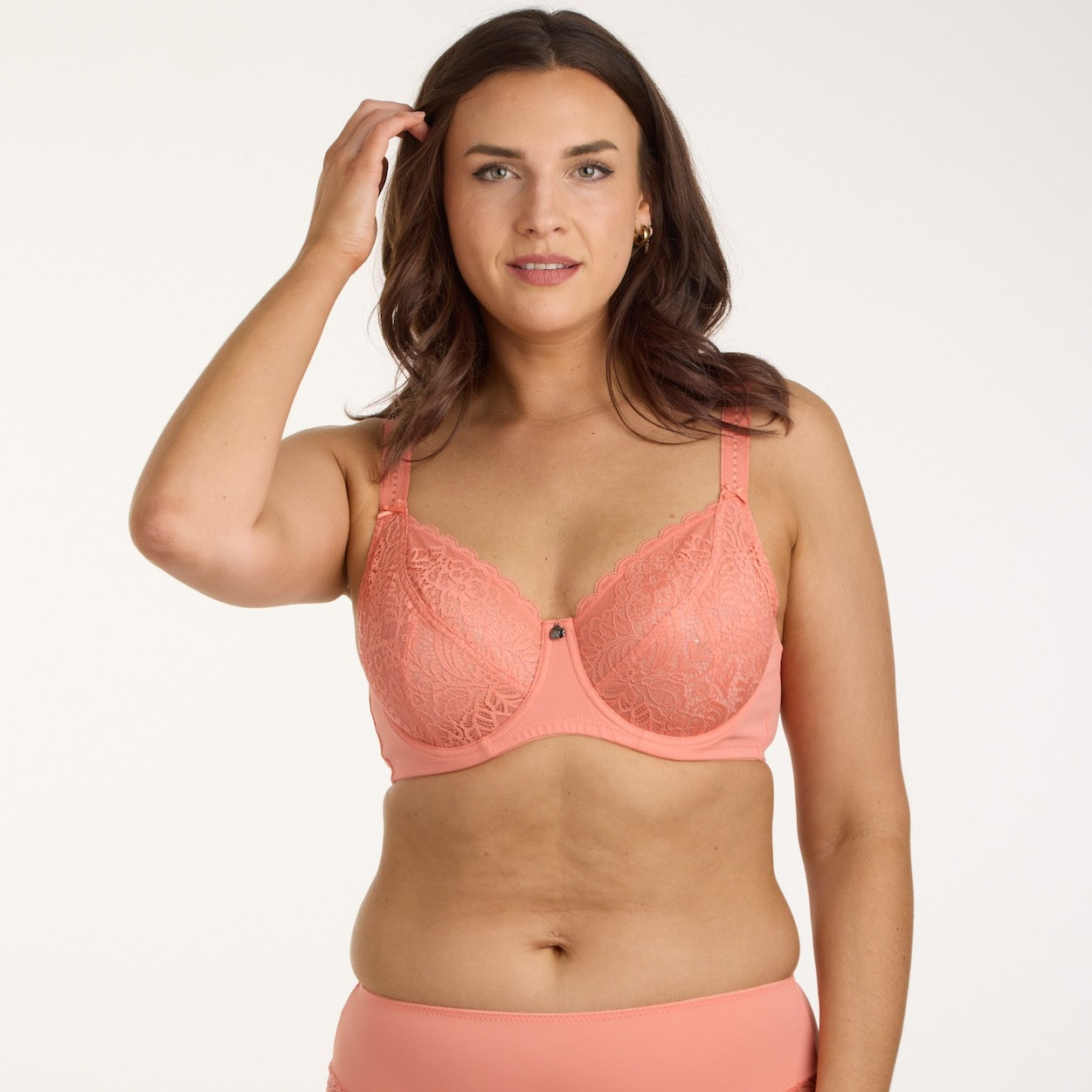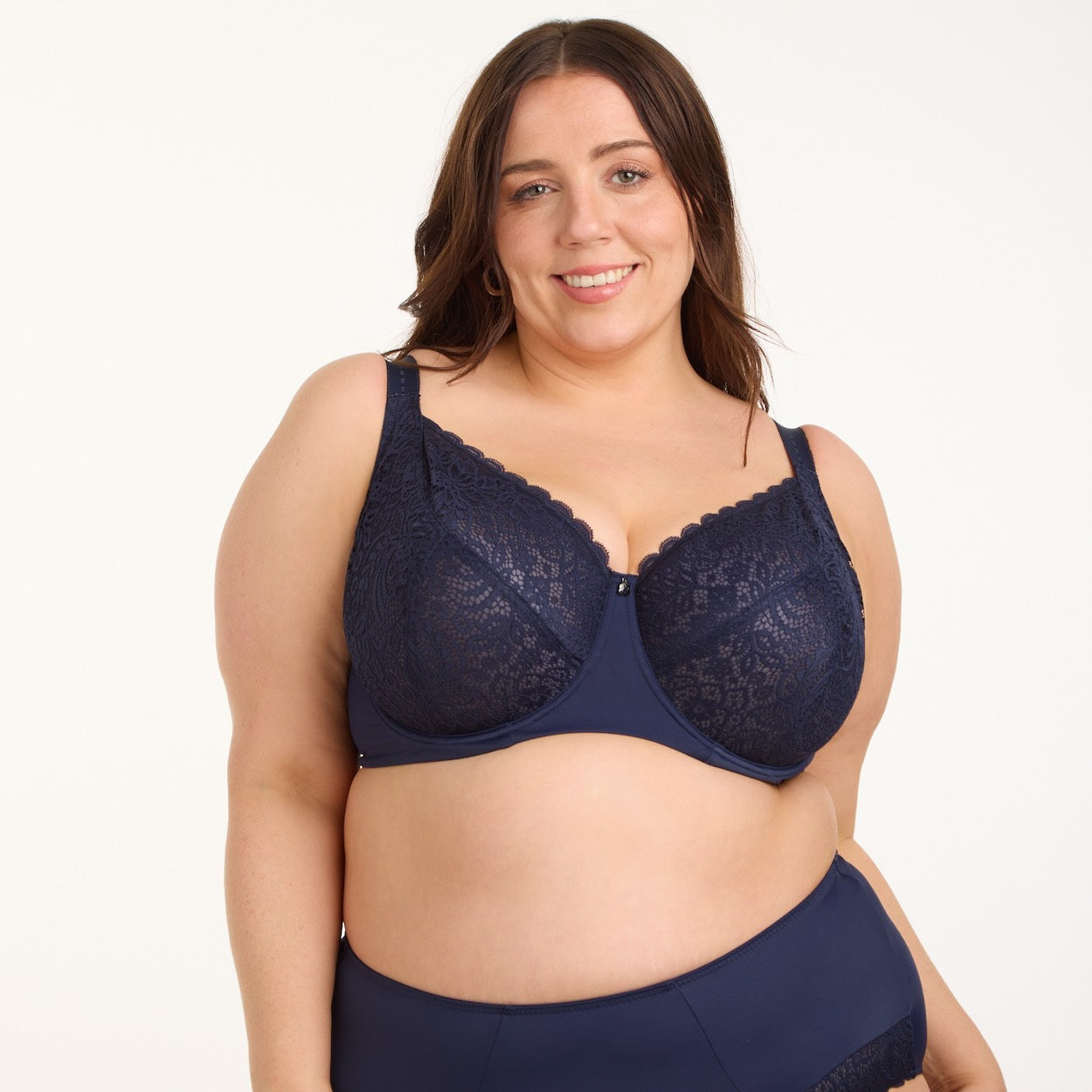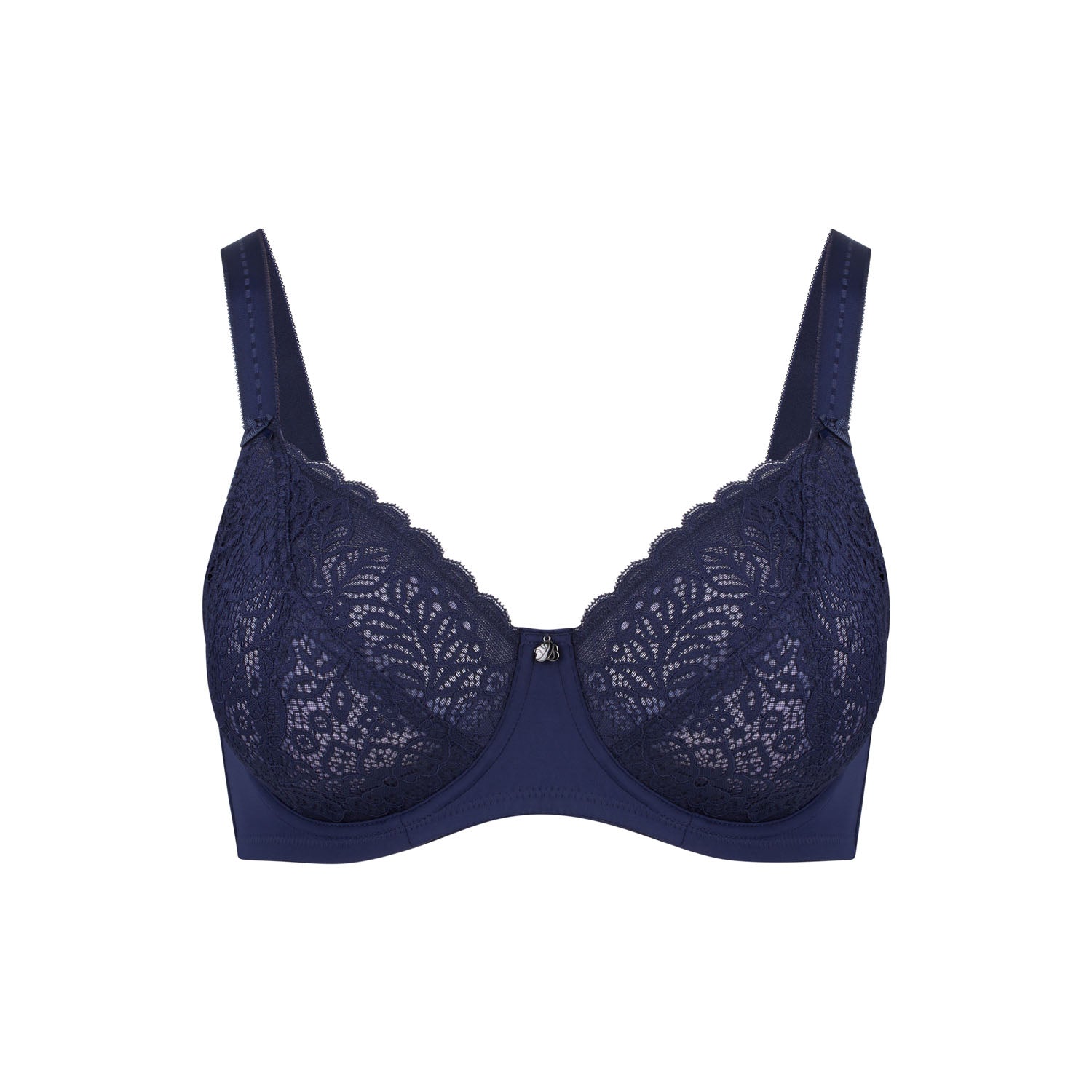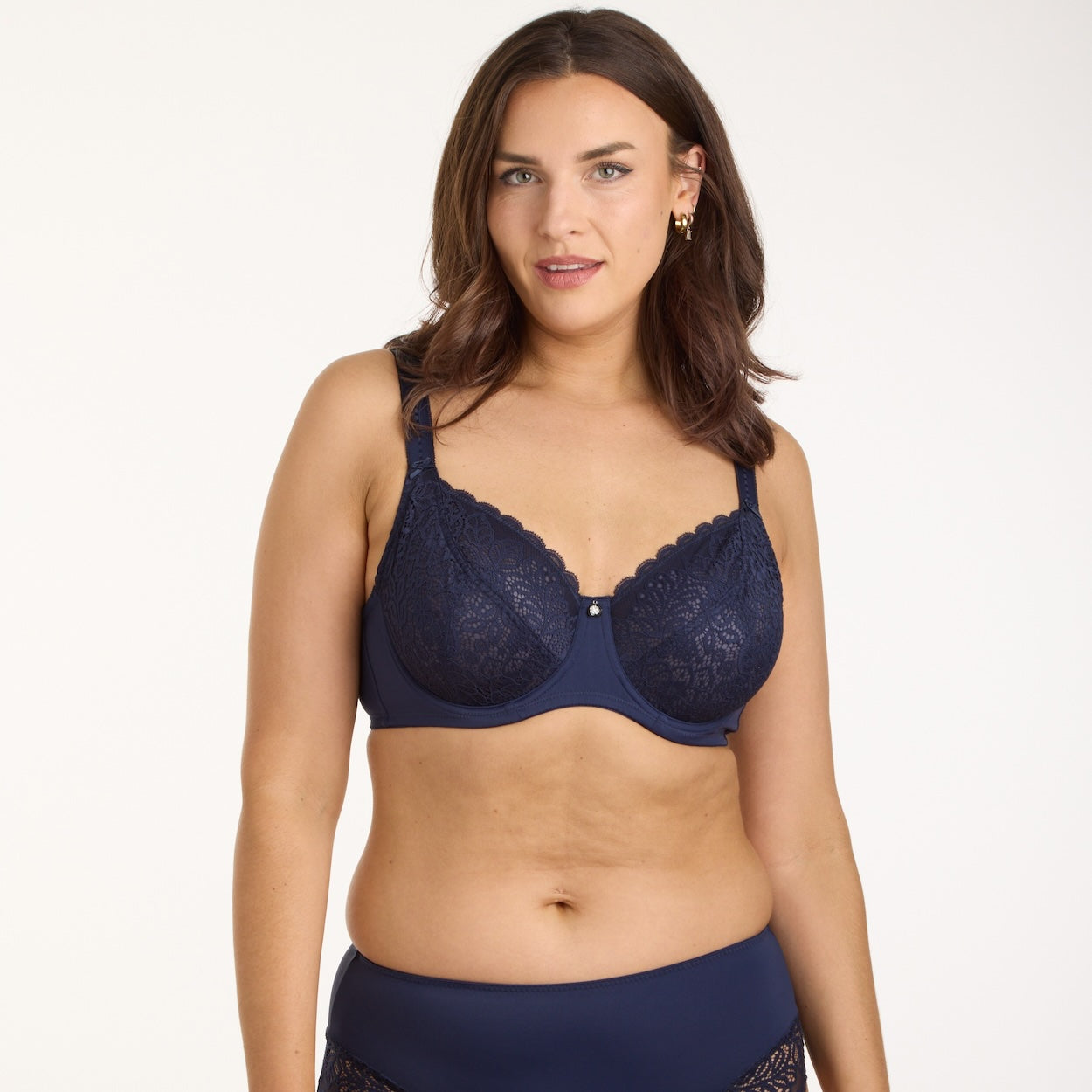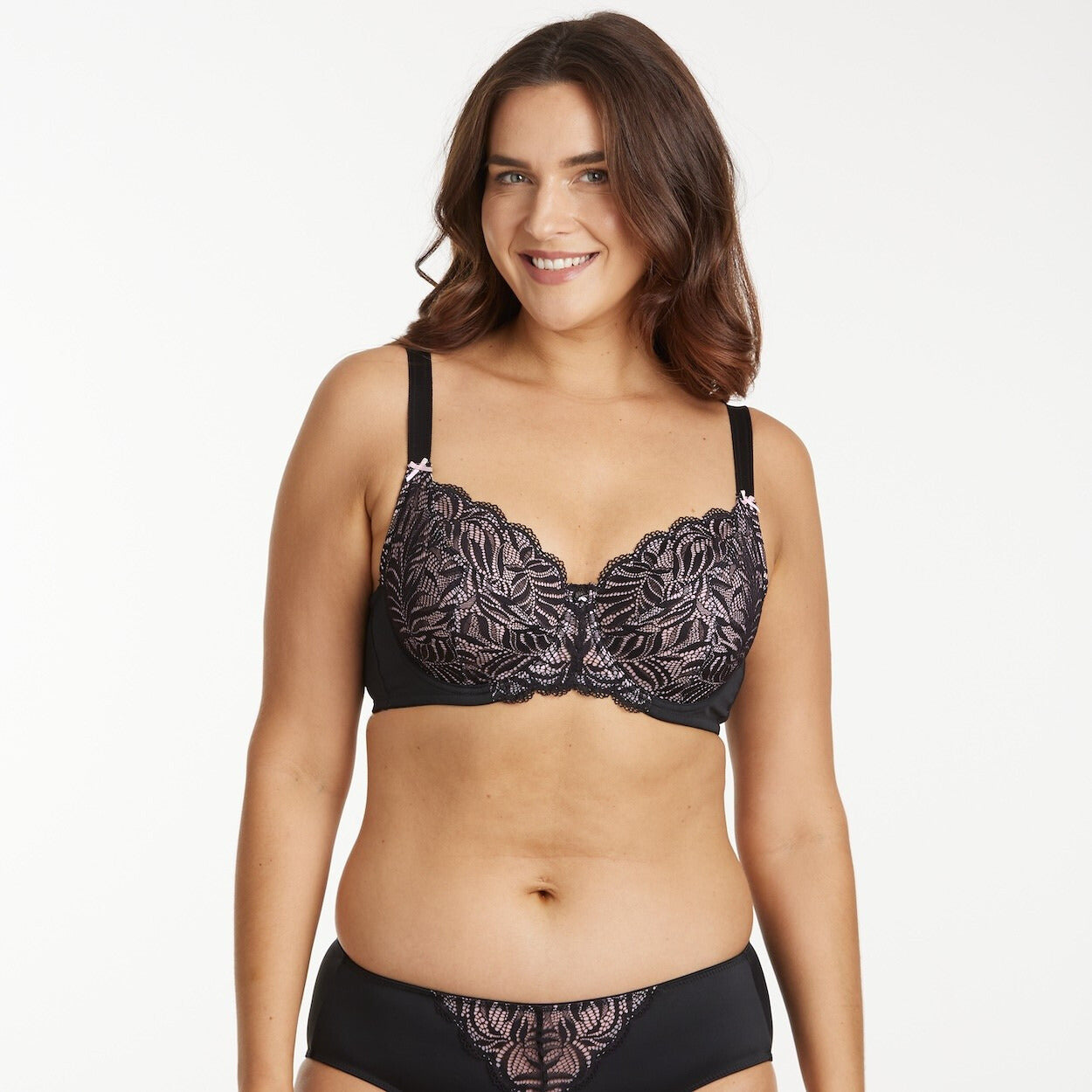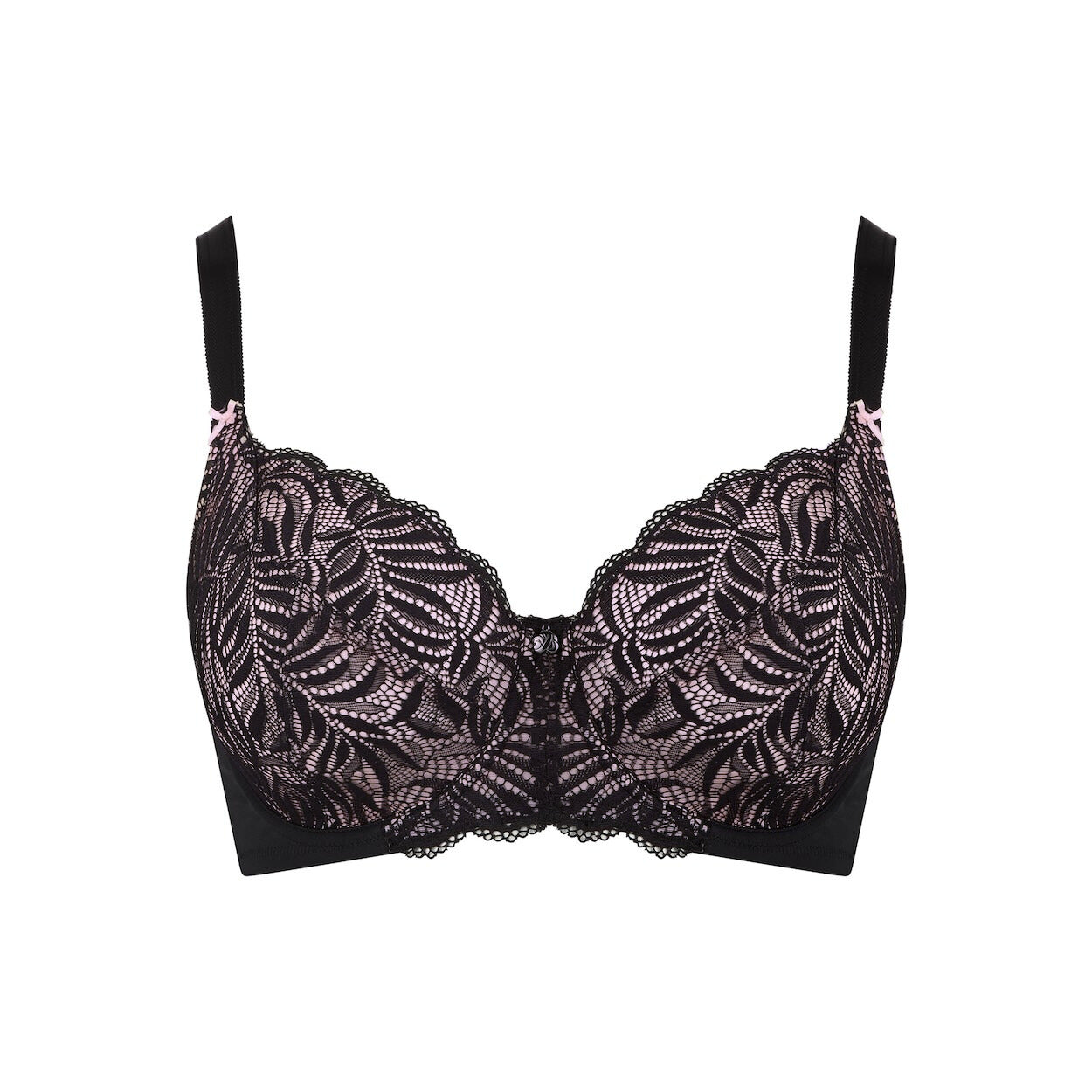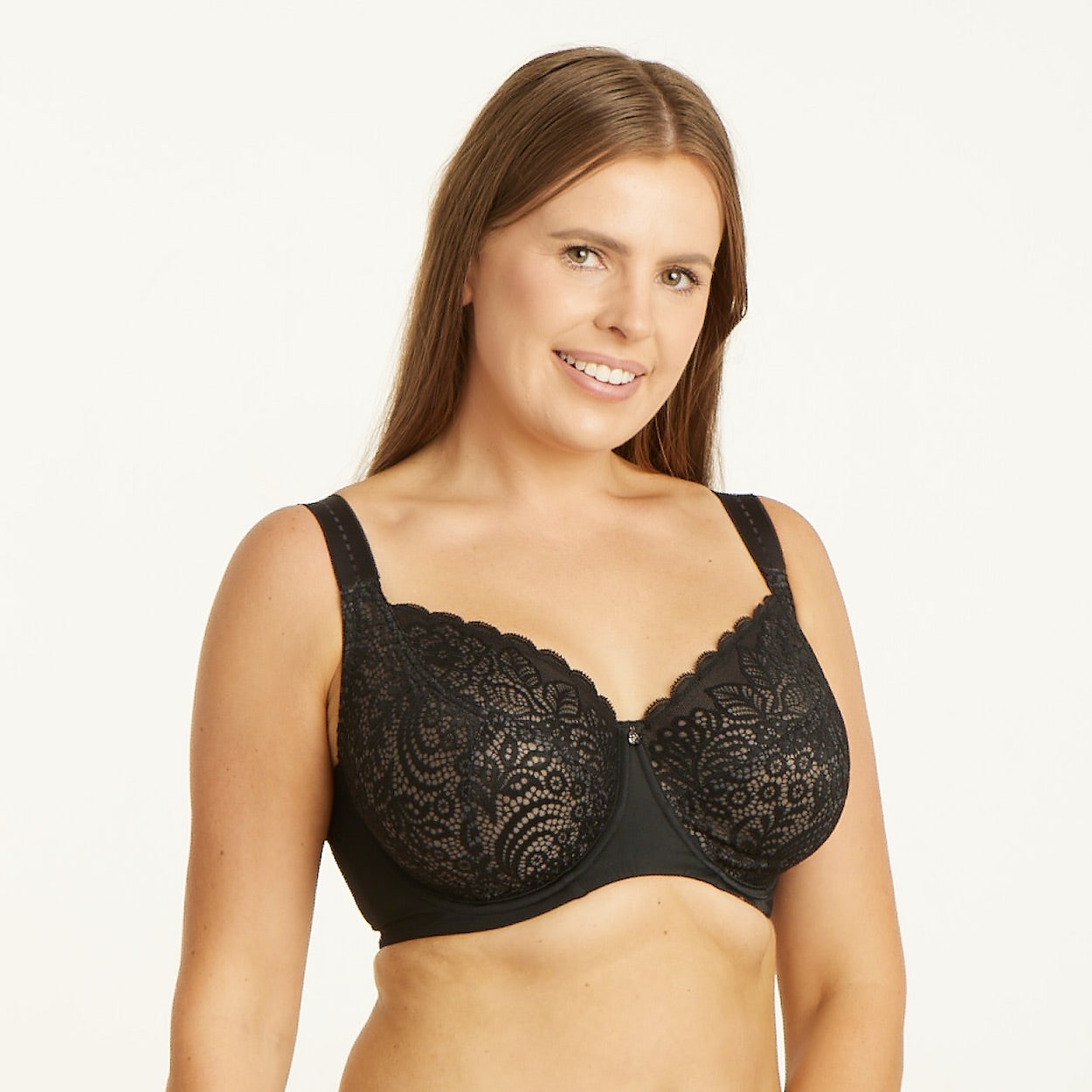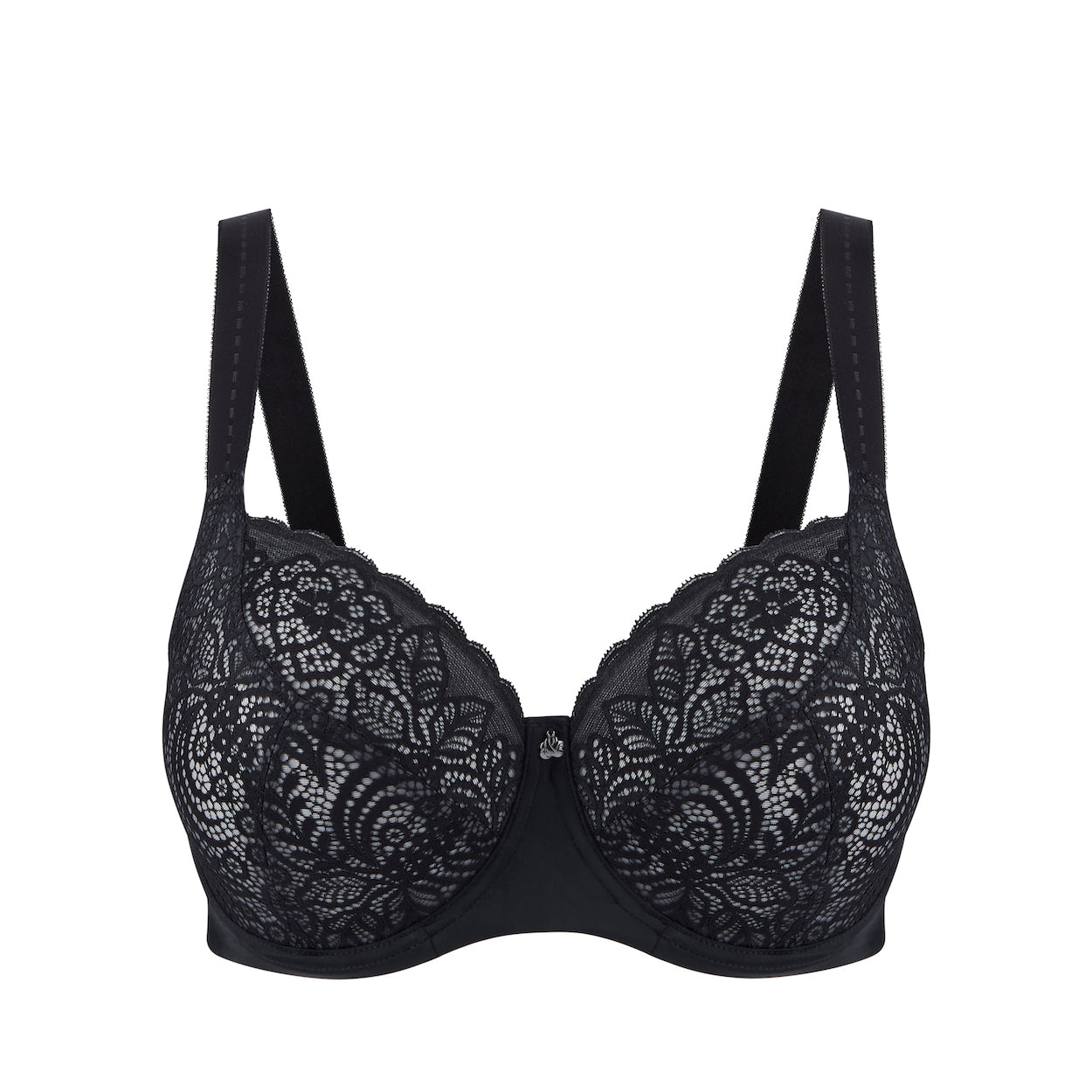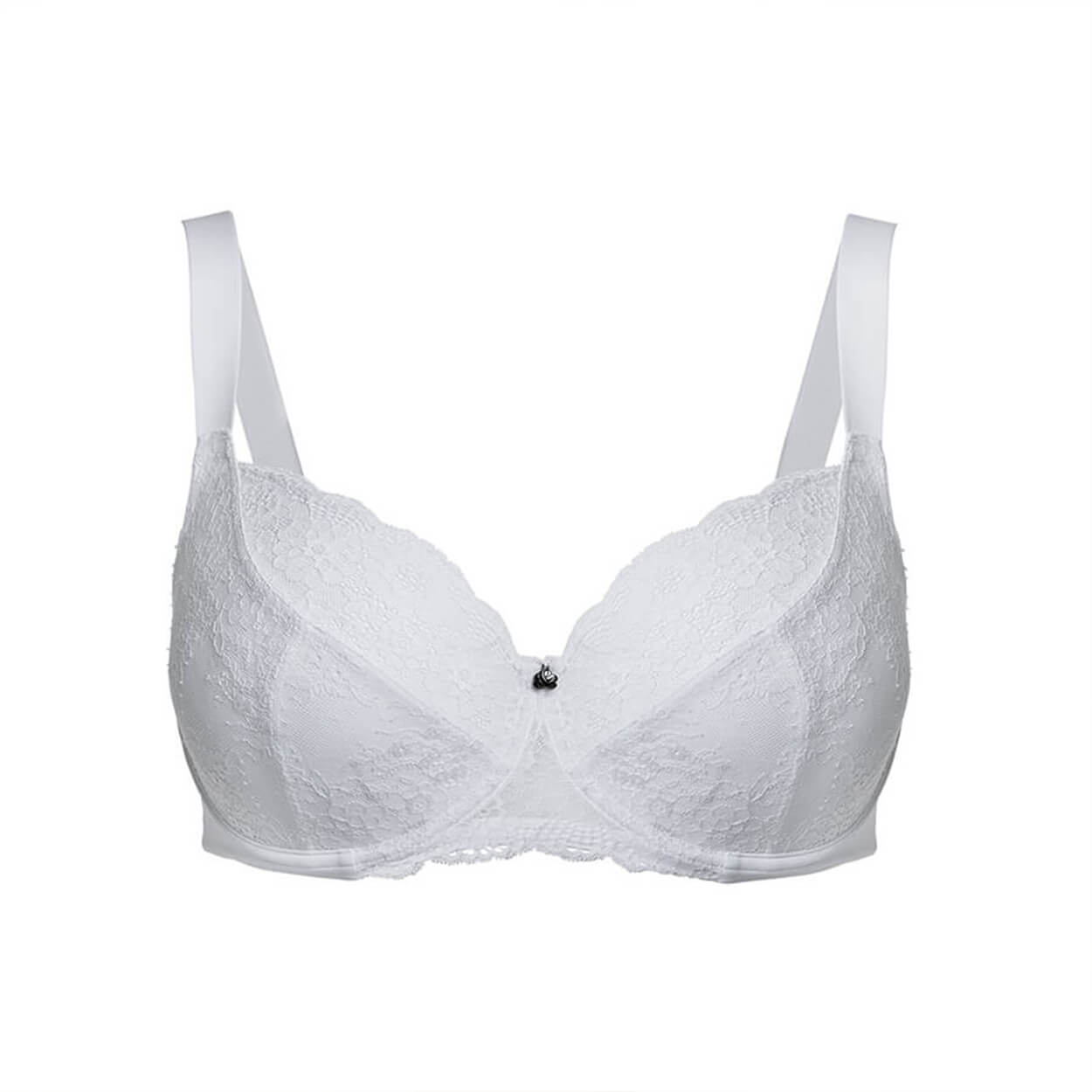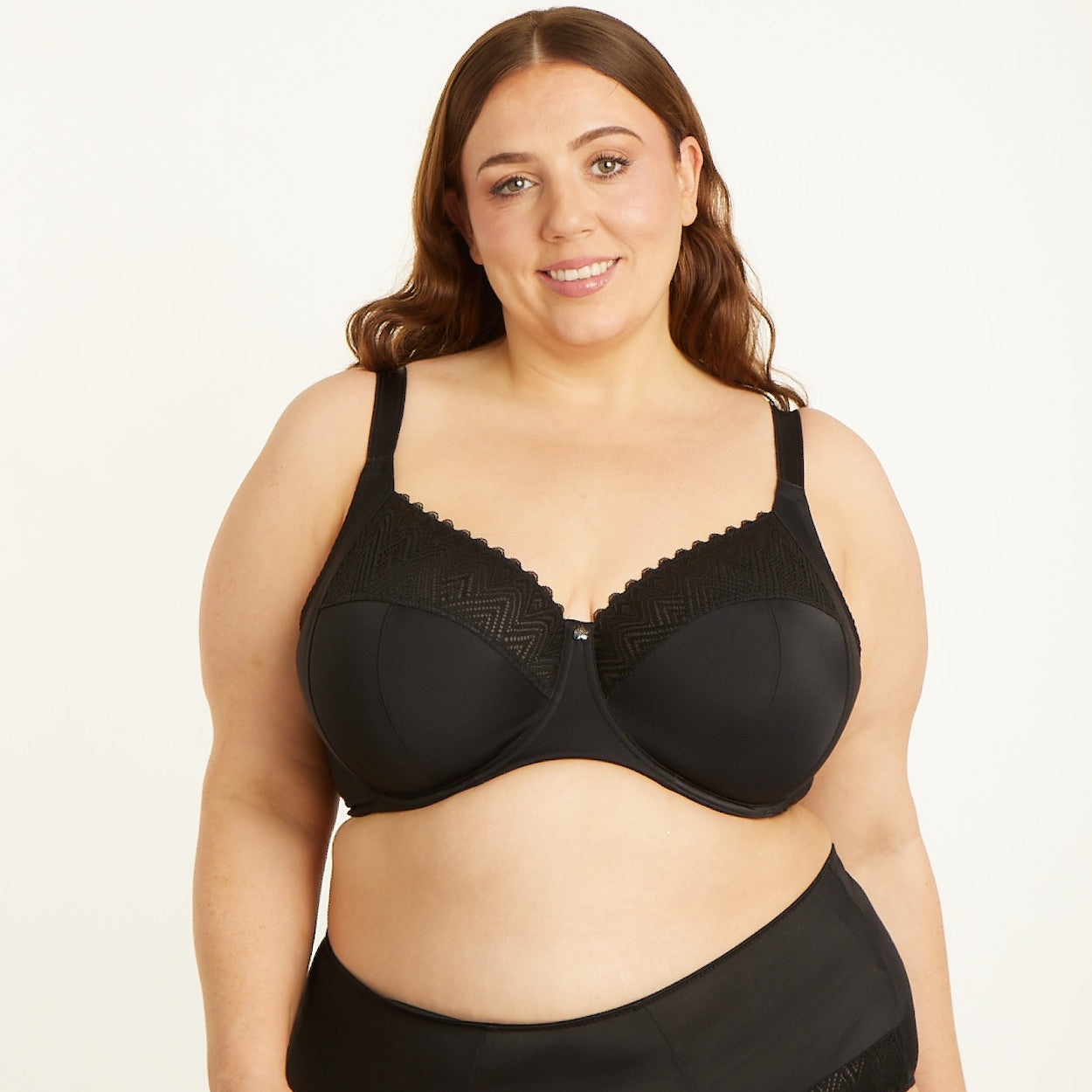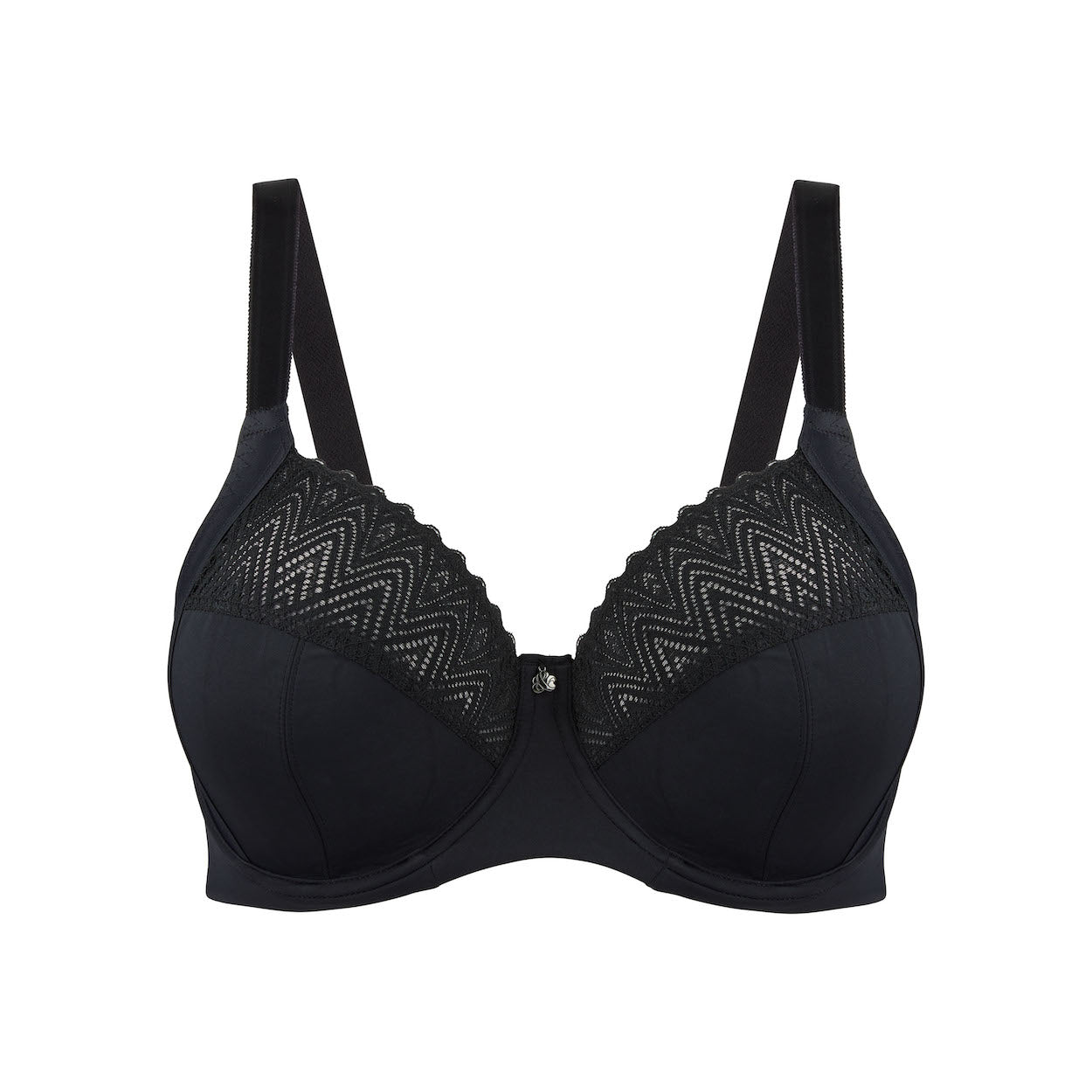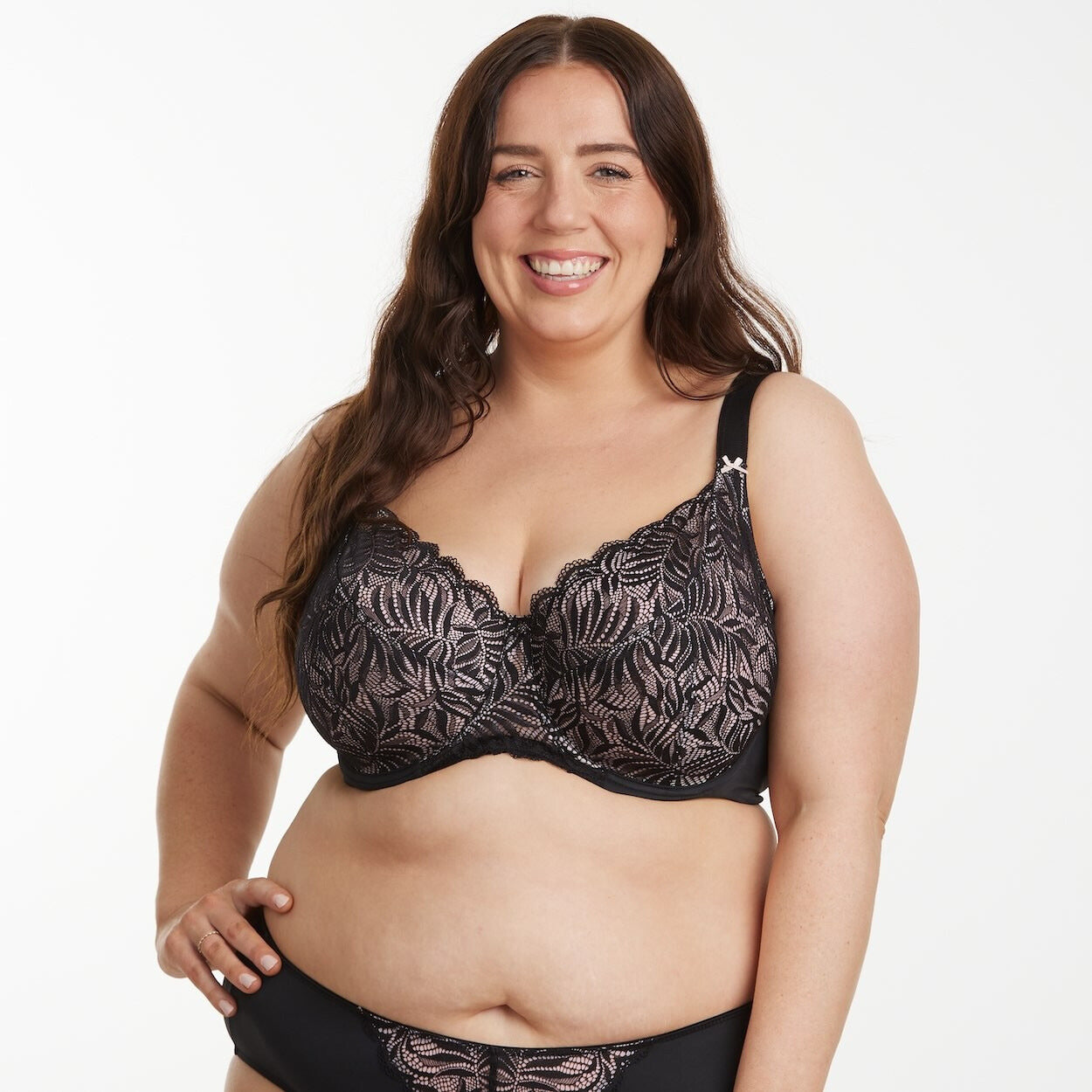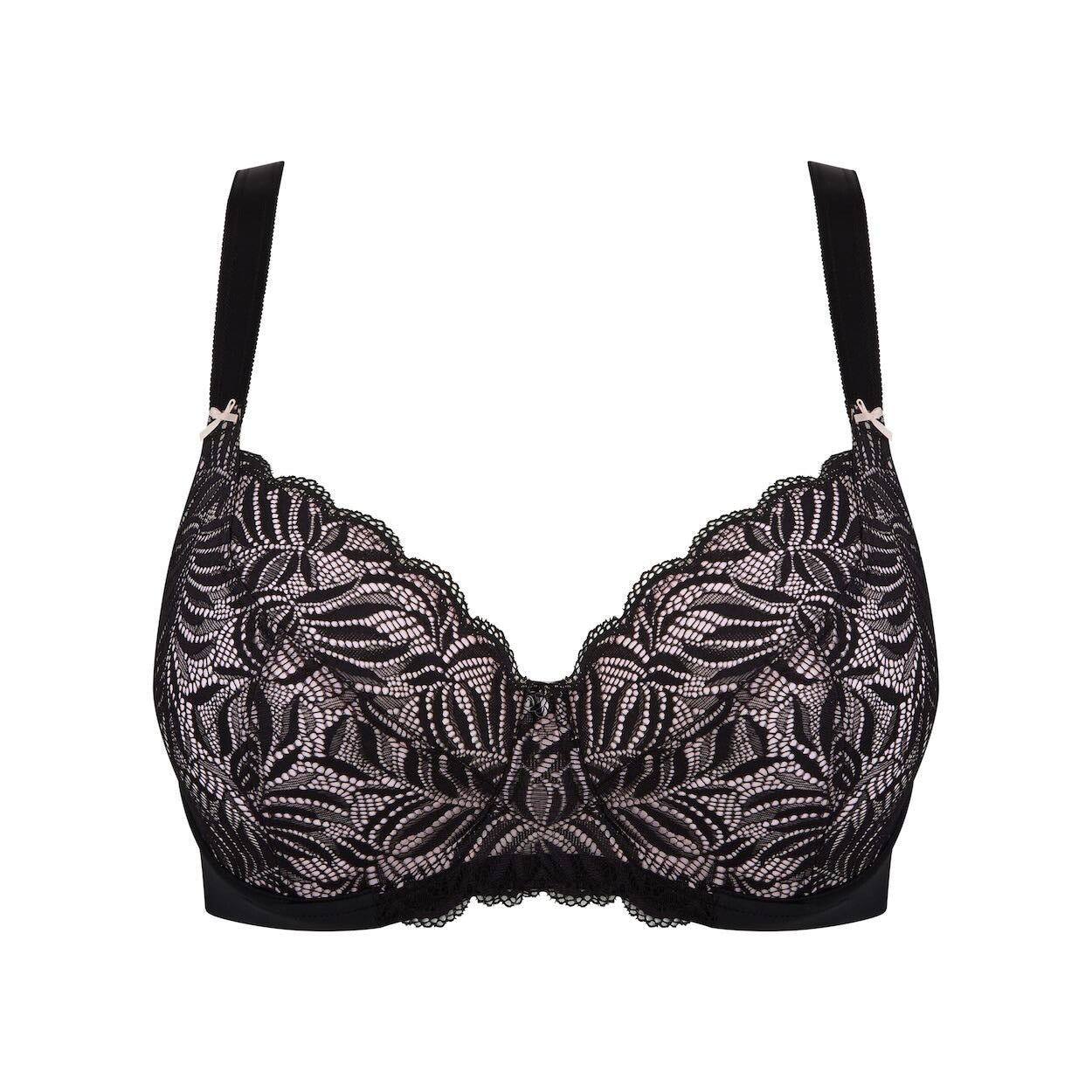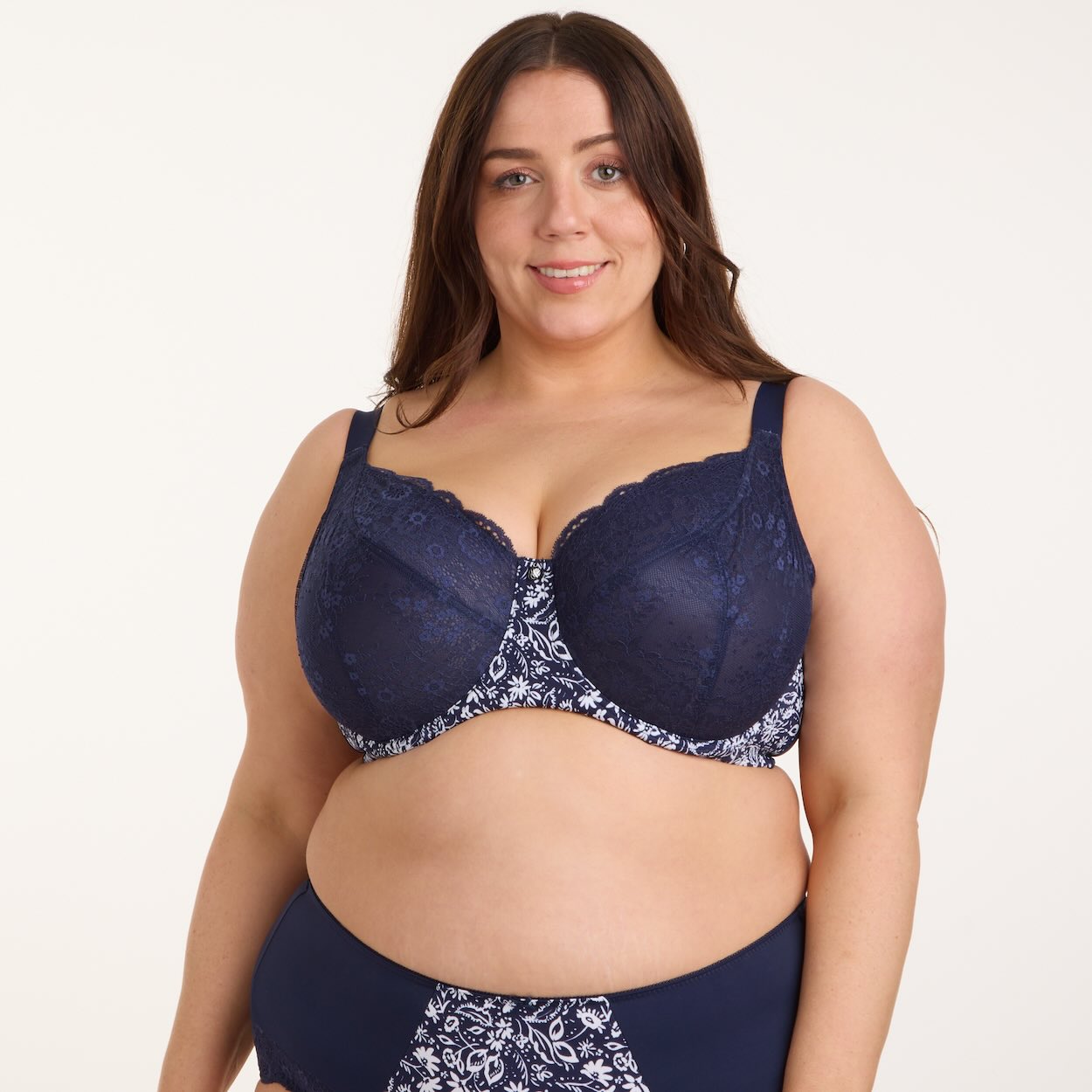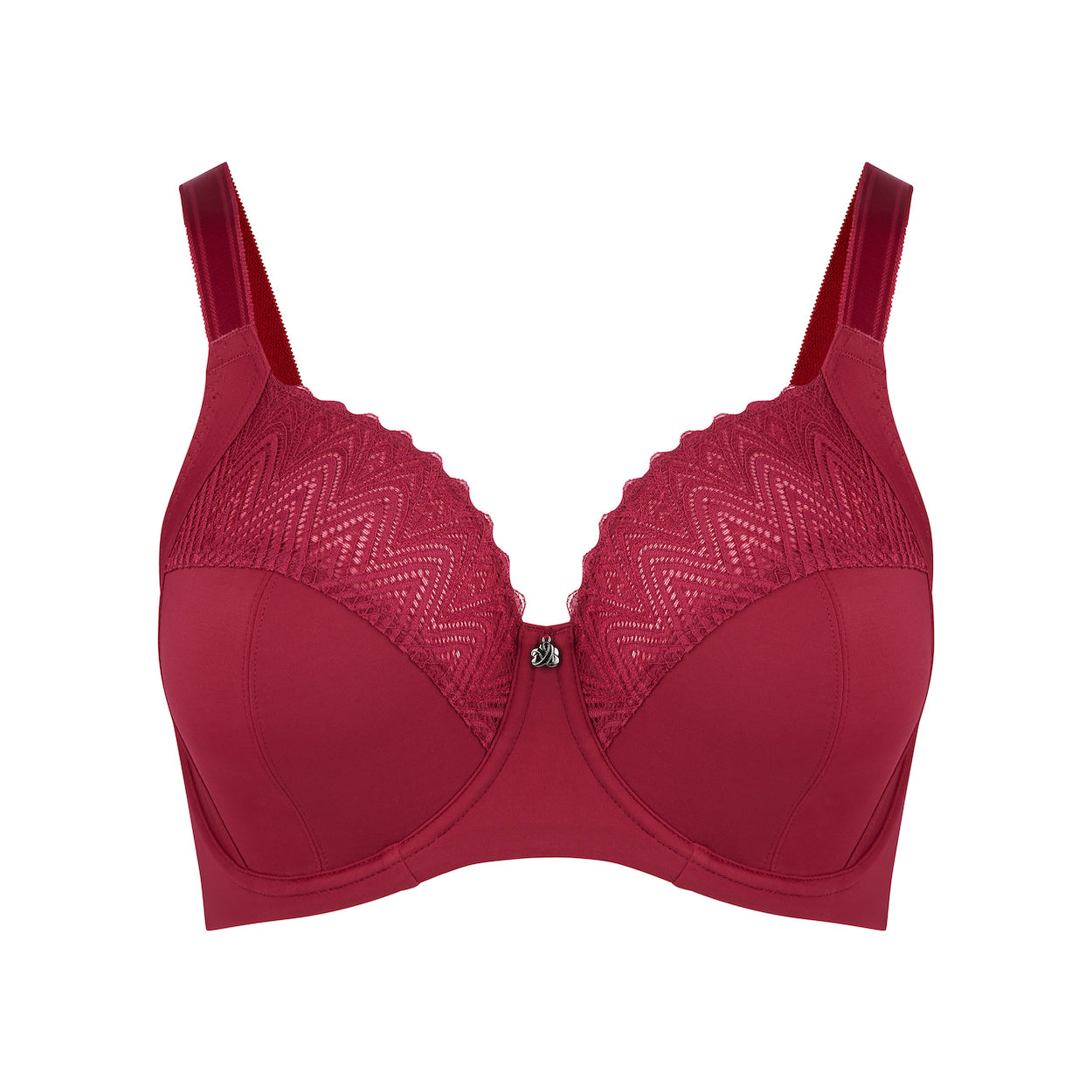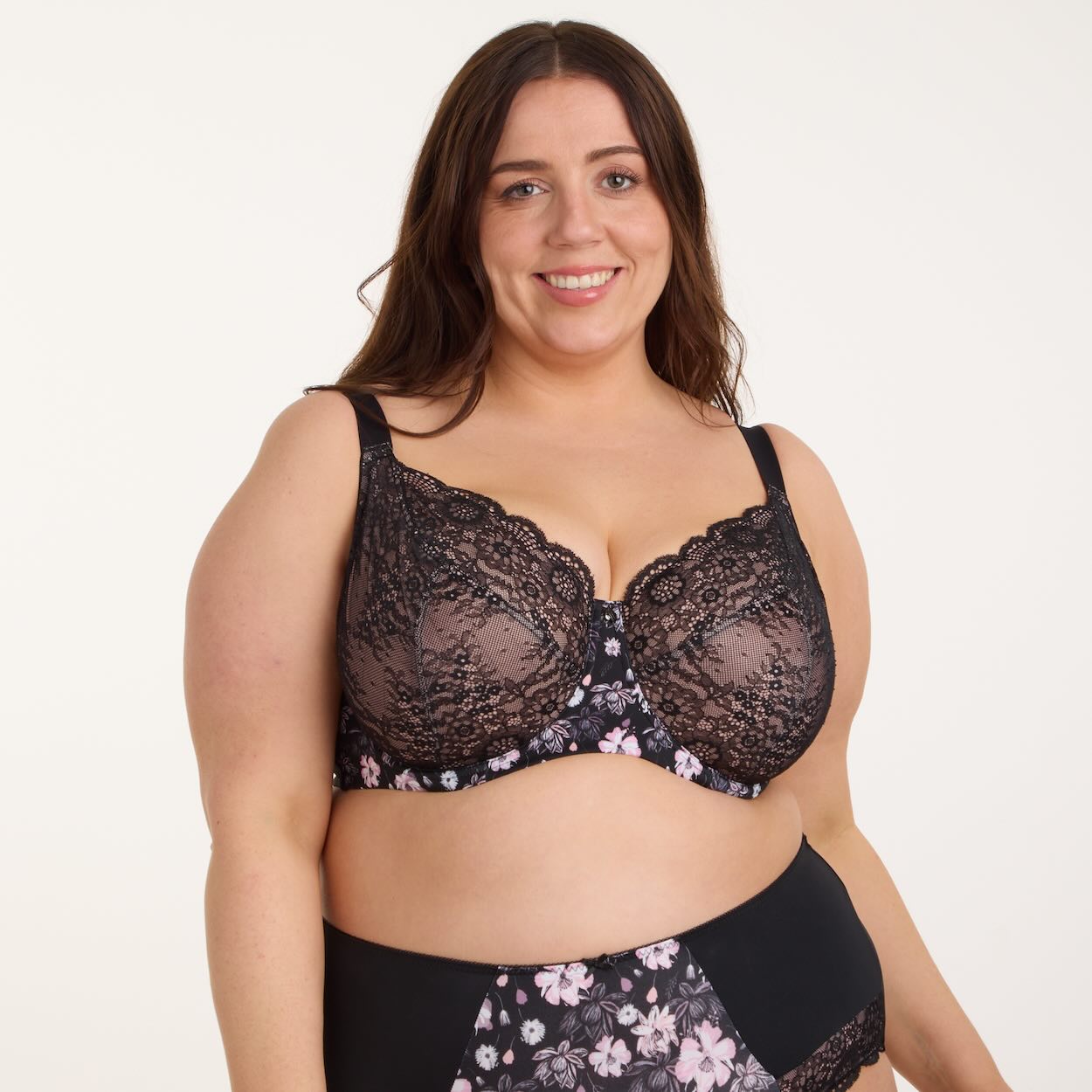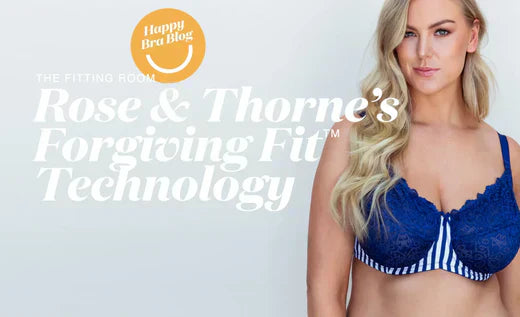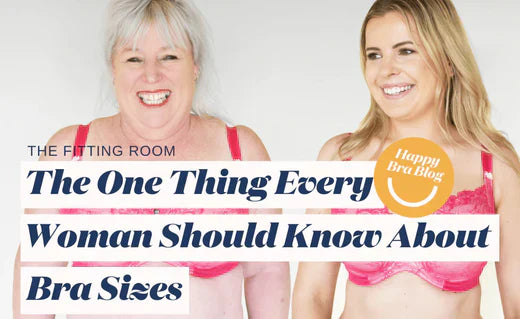
Bra Crossover Sizes - Everything You Need to Know!
Have you ever found yourself wondering how you and your friend both wear D-cup bras but have completely different-sized boobs? Or maybe you’ve found yourself in a changing room trying to go up or down a size in a bra, but the cups just don’t seem to fit the same from size to size?
We talk straight about bra sizing, crossover bra sizes, and finding the perfect bra fitting.
Bra Sizing Basics
We know bra sizing can sometimes feel like another language. Where clothing is relatively simple (Want a bigger size? Go up a number. Smaller? Down you go.), bras have the added confusion of cup sizes, too.
You’re likely familiar with the idea that there are two parts that make up your bra size - the band size (10, 12, 14, 16, 18 etc) and the cup size (C, D, DD, E, F, etc), but did you know that they work in relation to each other, not as standalone concepts?
Don’t worry, we’re not going to make you pull out your high school maths you haven’t used since, and you definitely don’t need a calculator, but stick with us because this is the absolute ONE THING all women should know about bra sizing.
In basic terms - bra cup sizes are not made separately to band sizes. There’s not a machine pumping out hundreds of “D” cups which then get sewn to different band sizes and put out on the shelf - the D cup on a 12D is a completely different cup to the one that’s put on a 16D. And that’s for good reason!
But let’s start with the band size, because without that, we can’t find our cup size.
Understanding Bra Band Sizes
In Australia, the band sizes follow a similar sort of idea as clothing (which doesn’t mean your bra should be the same size as the clothes you wear, but that’s a story for another article!). It’s calculated by measuring your rib cage (the bit underneath your breasts), and changes sizes in a similar way to clothing too - if the band is too loose, go down a size; band too tight, go up.
Easy enough, right? Now, this is the important bit...
Understanding Bra Cup Sizes
Cup sizes represent the difference between rib cage and over-breast measurements, NOT the measurement of the breast itself. It’s about the volume of your breasts in comparison to the size of your body.
Let’s try to think of them like steps. An A cup is the first step up from the band size/rib-cage measurement, a B cup is the next step up and so on.
Without knowing the band size/rib-cage measurement, you’re not able to calculate the size of the cup because you cannot see what it is stepping up from. We need to know if the over-breast measurement is significantly bigger than the ribcage measurement (which would be a few steps away, making it a bigger cup size), or if it’s relatively similar to the rib-cage measurement, resulting in less steps up and a smaller cup size.
Sizing Up or Down In Your Bra
Now, you probably have a fair idea of what bra size you wear from that one time you were fitted when you first got boobs. But let’s say that size just isn’t feeling quite right, and you think you need to change it up. When it comes to changing your bra size, the basic rule is this:
If you’re moving UP a band size (say, from a 14 to a 16), you should go DOWN a cup size (assuming it’s only the band and not the cup that is too small in the 14), because the difference between the measurement of your rib-cage (the band size) is now less “steps” difference than what it was before.
And the opposite is true for going down a band size - band = down therefore cup = up as there’s now more of a difference between the two measurements.
Yikes. That’s a lot to comprehend! Let’s run through an example.
You’re currently wearing a 14D. The cup fits well, no spillage or gaping to be seen, but the hooks of the band are on the loosest eye and you’re still feeling a bit constricted. It’s time, you decide. You’re going to treat yourself to a new bra, and you’re going to make sure this one is actually comfortable to wear.
You head into the store and find a bra you like, and yippee, all the sizes are in stock! But which size are you going to take into the fitting room?
Should it be A. 16D B. 14DD C. 16C D. 14E?
If you chose 16C, you’re right. Remember, the formula is UP a band size, DOWN a cup size.
But enough with the words; let’s put this in a visual form!
Let’s say this avocado represents a breast.

Now, this is how the avocado fits on, say, someone wearing a size 12 band.
As her ribcage is quite narrow, the avocado appears quite large over her entire chest, and stick out quite far in front of her. In this example, let’s say she’s wearing a 12DD, meaning her over-breast measurement is 5 steps up from the measurement of her ribcage.
Let’s take the avocado and see how it fits on someone wearing a size 14 band. The only thing that is going to change in the following picture is the size of the model; the avocado is exactly the same as above.

You can see that although the avocado has stayed the same size/volume, it appears smaller on the model’s chest. The difference between her ribcage measurement and the over-breast measurement is less than it was for the size 12 girl. The breasts are more spread out over her chest and don’t stick out as far in front.
This time, the cup is only 4 steps up from the band size. That means she’s a 14D, even though the physical size of her avocado breast is exactly the same.
Let’s see if you’ve got the idea:

This model wears a size 16 band, one size bigger than the previous example. Again, you can see the avocados look smaller on her chest, and if you looked at her side on, you’d see they sit out even less than the size 14. This time, there’s only 3 steps difference between her ribcage measurement and her over-breast measurement. What size would she be wearing?
If you said 16C, gold star!
How Bra Crossover Sizes Work
Let’s go back to the idea of a magical machine creating cups for bras. The cup that the machine makes for a 12DD bra will hold the same volume of breast as the cup it makes for a 14D and a 16C bra.
This is what is called “crossover sizing” or “sister sizes”. The band size down and cup size up, and the band size up and cup size down from the size you wear are effectively the “sister” of the bra size you normally wear - a few extra inches either way in the band, but the cups are close enough that they’re very similar sizes.
It's important to note that the cups will still differ slightly in shape across the band sizes, and the placement of the underwire on the band will also differ, as each cup is made specifically for its size. For some people, these differences will work fine. However, although the cups will hold the same volume of breast, this is different from the overall weight or shape of the breast, and crossover sizing will not work for everyone.
So why is it important for you to know all of this? Armed with the golden rule (repeat after me: if band goes up, cup goes down), bra shopping should be a whoooole lot easier! It’s also a good trick to know if the bra you’re looking for doesn’t come in your size - maybe you could try the crossover size instead?
CHEAT SHEET:
You’re the type who always looks in the back of the textbook for the answers, aren’t ya?! It’s alright, we won’t tell, but here’s the quick-fire guide to figuring out what size to change to:
- The band of your bra fits right, but the cups are too small: Stick with the band size you’ve got and go up a cup size e.g. a 12D to a 12DD
- The band fits right, but the cups are too big: Stick with the band size you’ve got and go down a cup size e.g. a 16G to a 16F
- The cups seem the right size but the band is too loose: Go down a band size and up a cup size e.g. from a 18F to a 16G.
- The cups seem the right size but the band is too tight: Go up a band size and down a cup size e.g. from the 14DD to a 16D
- Both the band and cup are too small: Go up a band size and stick with the same cup size (e.g. a 16D to a 18D)
- Both the band and cup are too big: Go down a band size and stick with the same cup size (e.g. a 14F to a 12F)
Book yourself in for an online bra fitting to find your perfect bra. View our Bra Size Chart for any size conversion needs to fin your perfect Rose & Thorne bra. Try our handy Bra Size Calculator.
Or browse our wide range of comfortable Rose & Thorne Bras online now.

